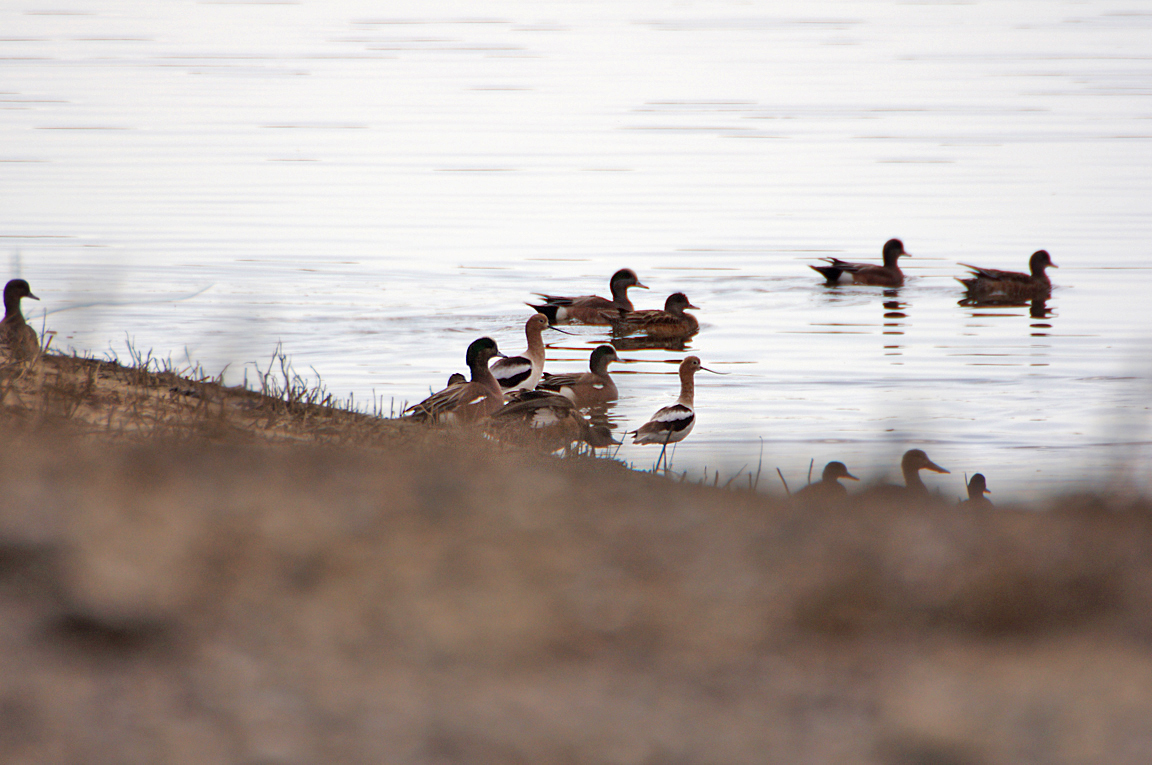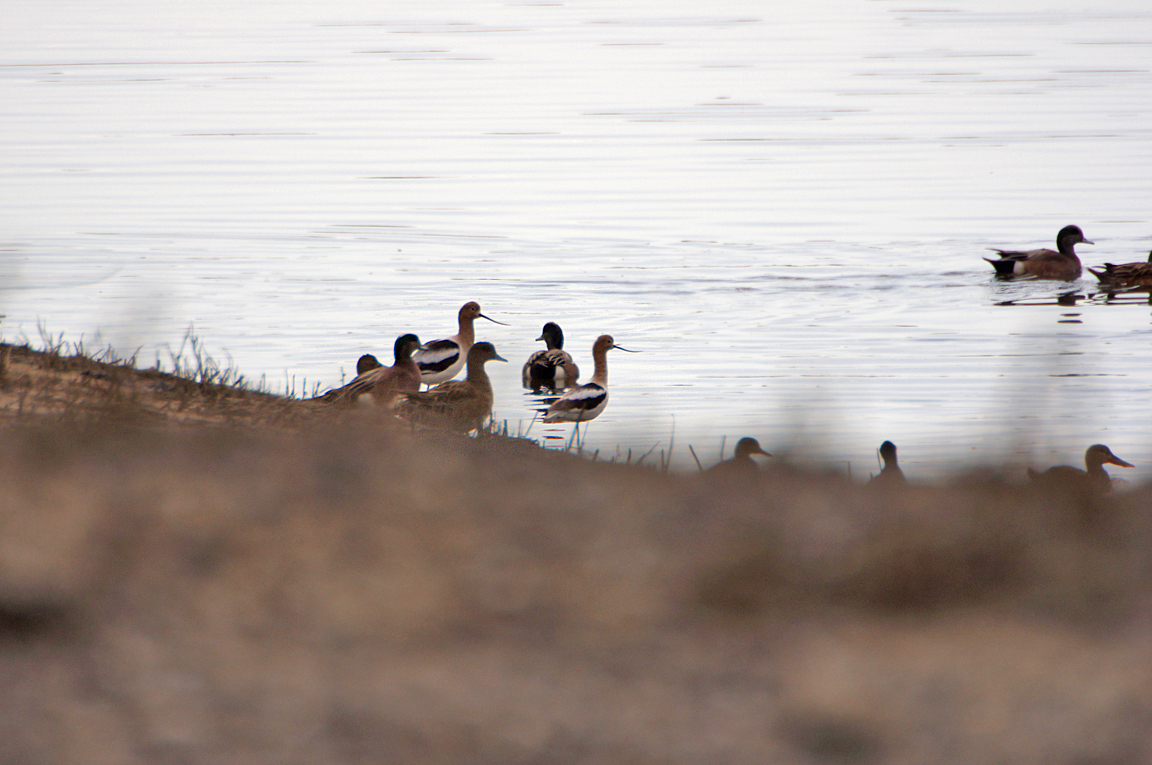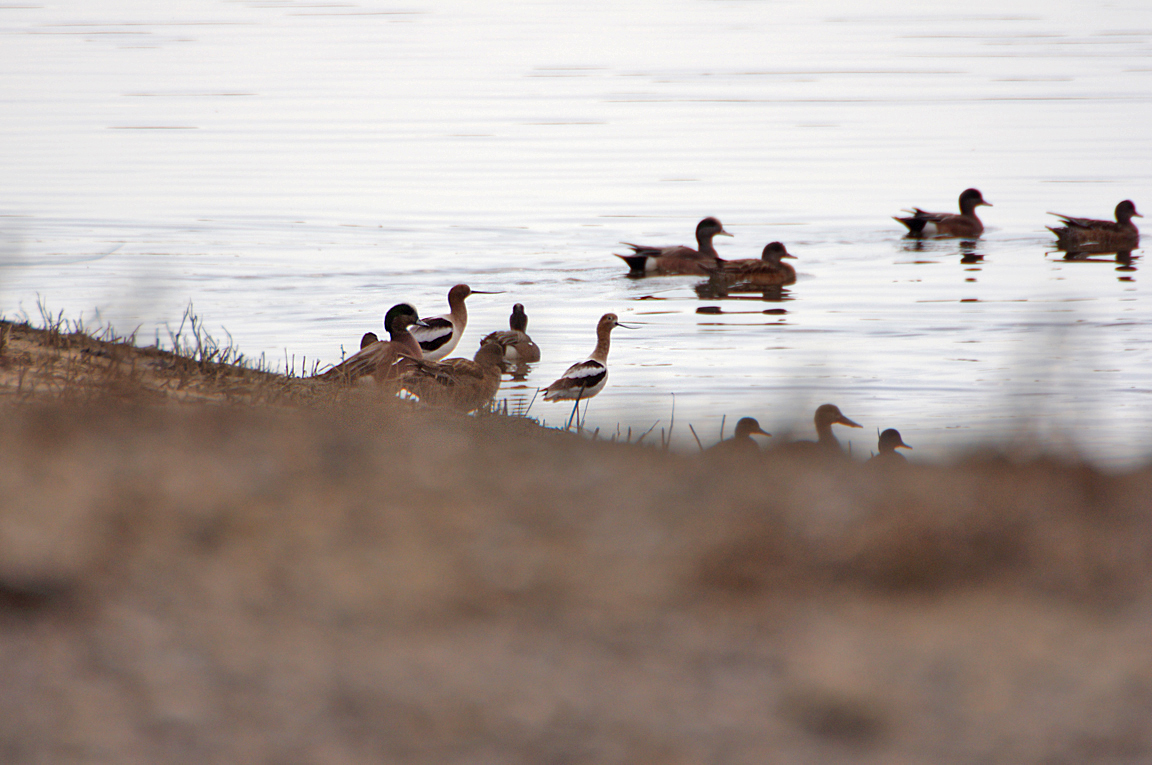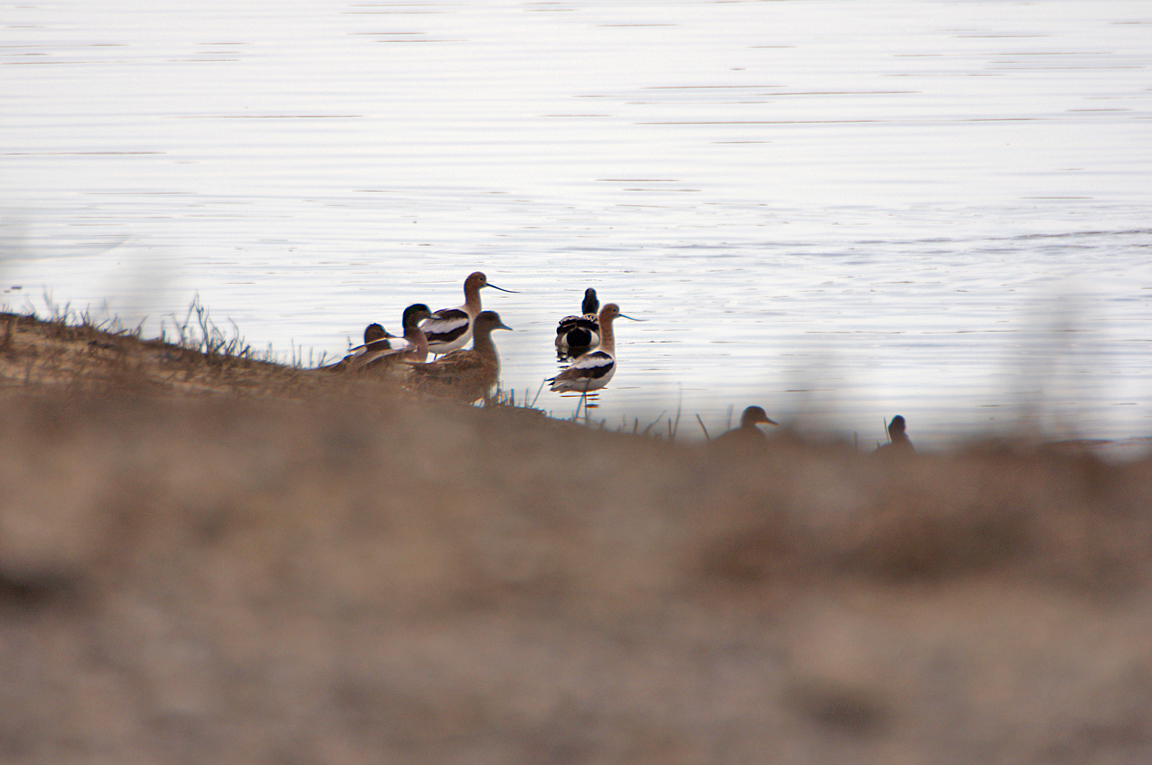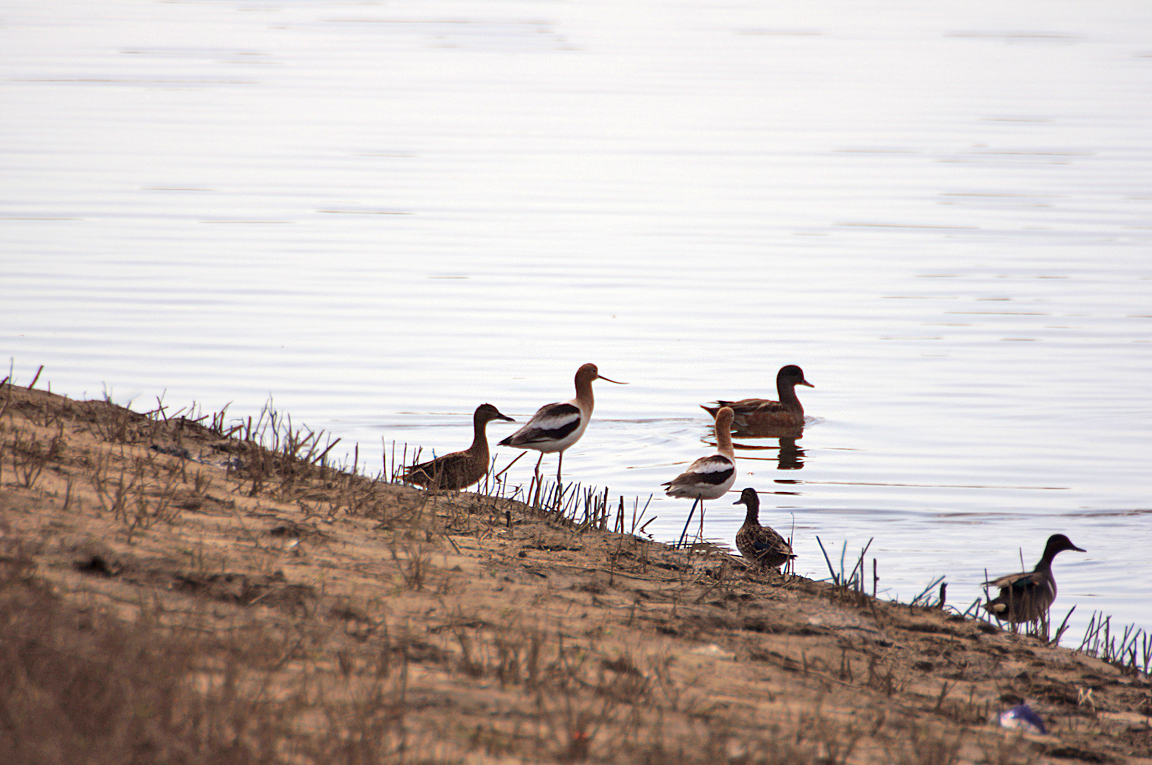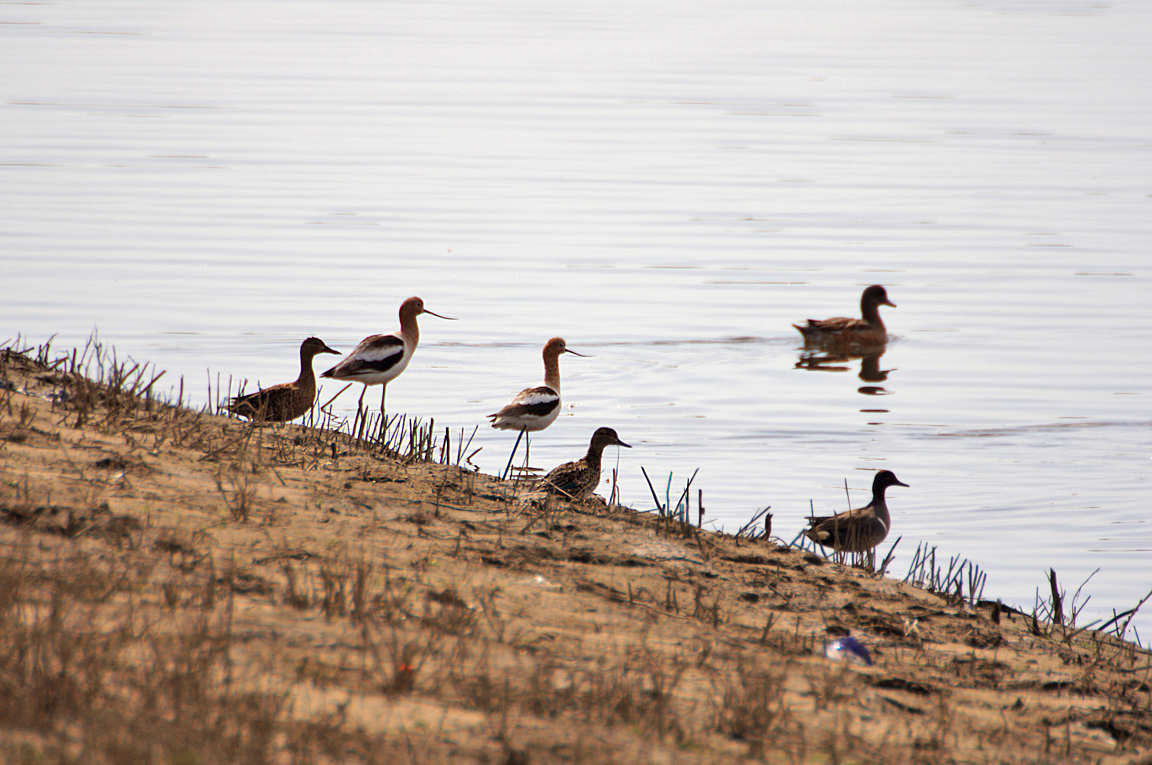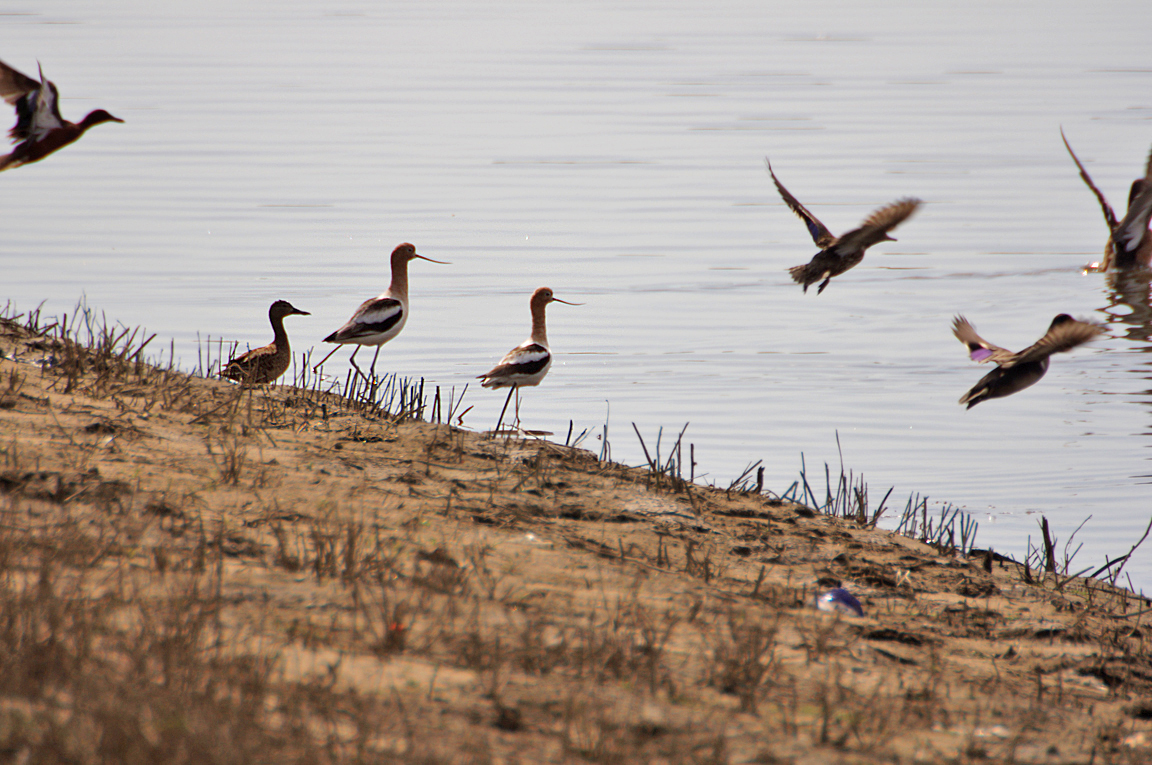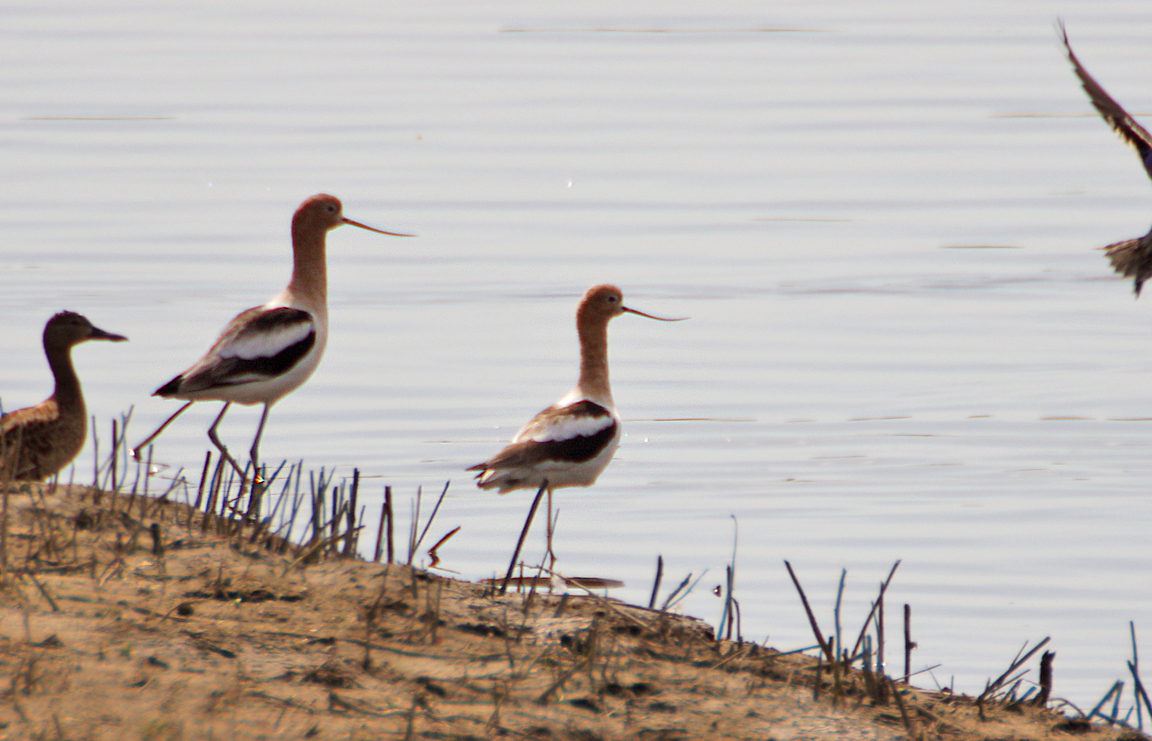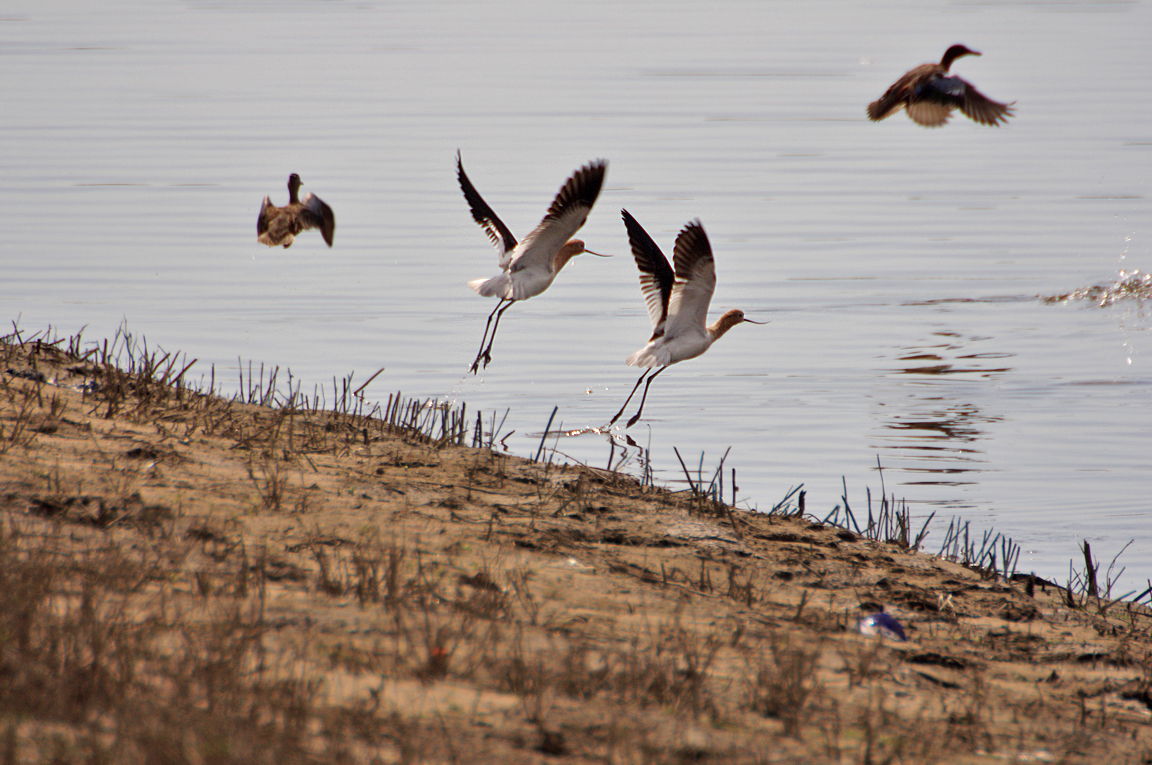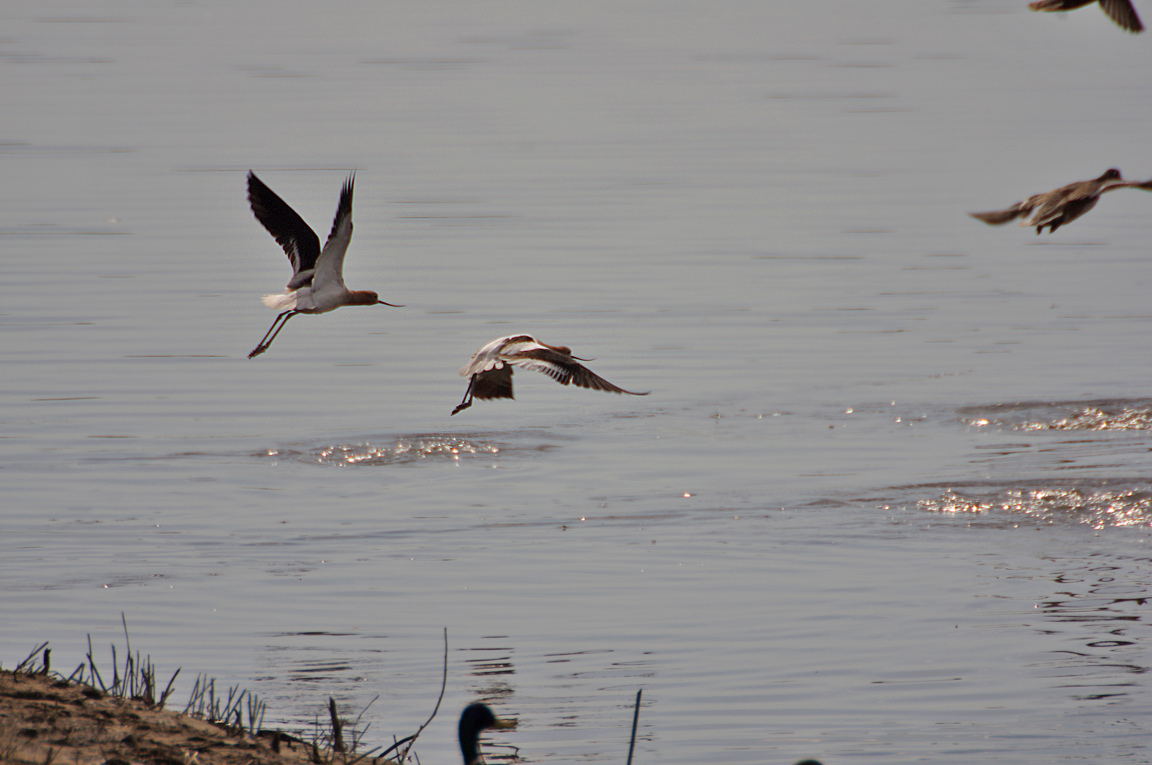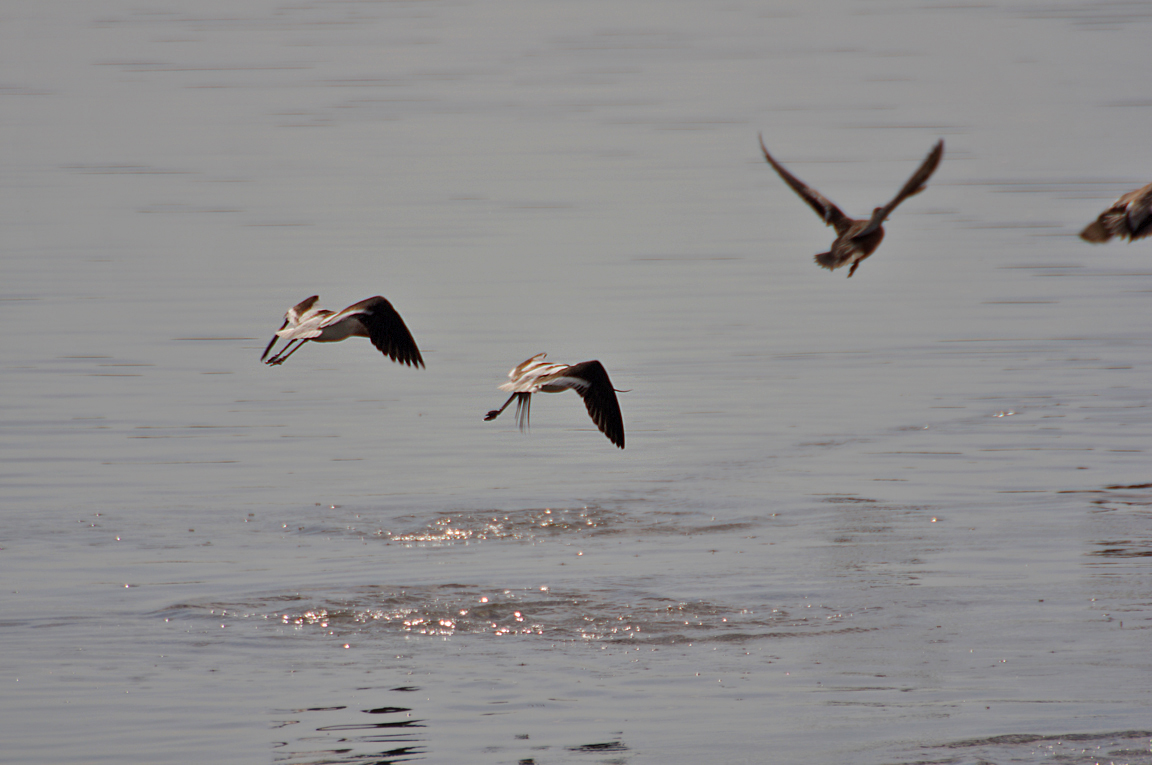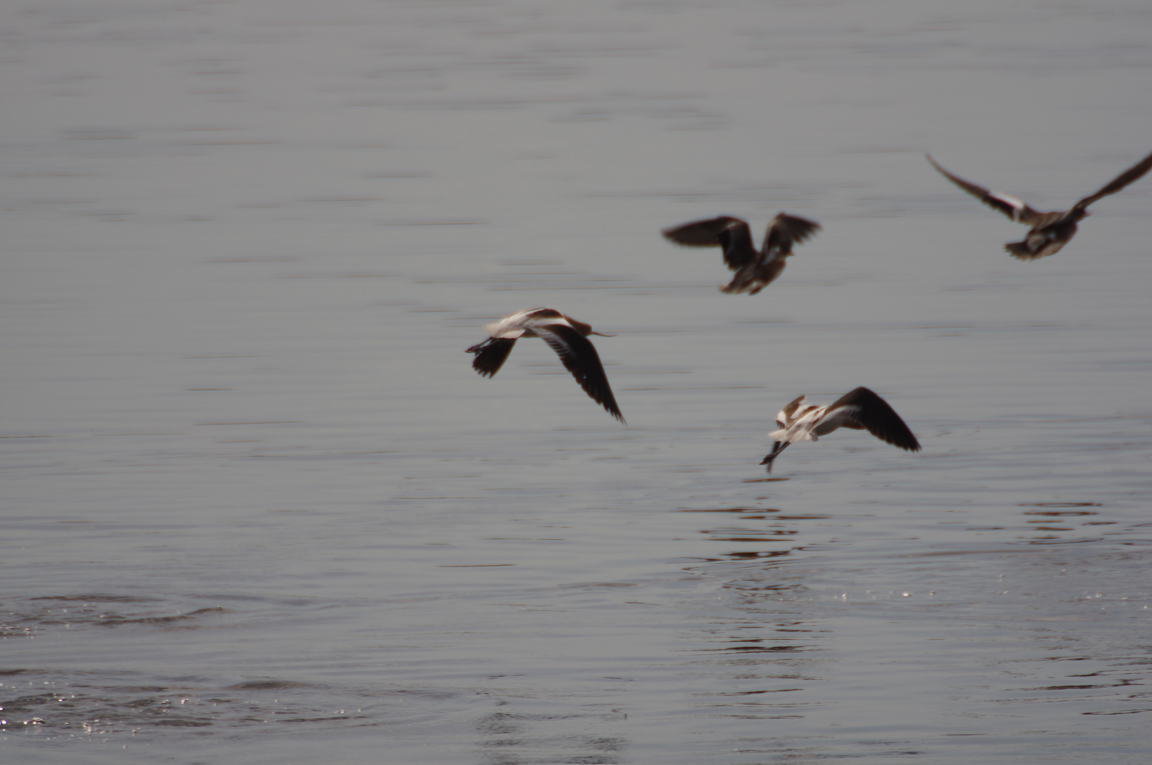|
|
|
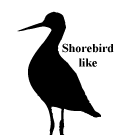 |
American Avocet
|
| Recurvirostra americana | |
With its elegant profile and striking coloration, the American Avocet is unique among North American birds. In summer it can be found in temporary and unpredictable wetlands across western North America where it swings its long upturned bill through the shallow water to catch small invertebrates.
Interesting Information
-
In response to predators, the American Avocet sometimes issues a series of call notes that gradually changes pitch, simulating the Doppler effect and thus making its approach seem faster than it actually is.
-
Nesting American Avocets aggressively attack predators, sometimes physically striking Northern Harriers or Common Ravens.
-
A female American Avocet may lay one to four eggs in the nest of another female, who then incubates the eggs. American Avocets may parasitize other species' nests too; single American Avocet eggs have been found in the nests of Mew Gulls. Other species may also parasitize avocet nests. Avocets have incubated mixed clutches of their own eggs and those of Common Terns or Black-necked Stilts. The avocets reared the stilt hatchlings as if they were their own.
-
American Avocet chicks leave the nest within 24 hours after hatching. Day-old avocets can walk, swim, and even dive to escape predators.
-
The oldest recorded American Avocet was over 15 years old, when it was found in California, where it had been banded a decade and a half earlier.
Description
Adult Description
-
Large shorebird. Long legs.
-
Long, upturned bill.
-
Black-and-white upperparts.
-
Rusty or gray neck and head.
-
Length Range: 86-109 cm (34-43 in)
-
Weight: 4761 g (168 oz)
-
Size: Very Large (32 - 72 in)
-
Color Primary: White, Brown
-
Underparts: Dark Brown
-
Upperparts: Dark Brown
-
Back Pattern: Solid
-
Belly Pattern: Solid
-
Breast Pattern: Solid
Sex Differences
Sexes Similar
Immature
Similar to adult, but head colored light buff.
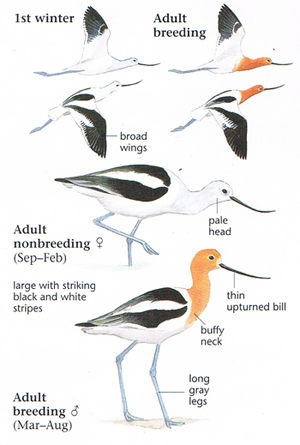
Photo taken from: The Sibley Field Guide by David Allen Sibley
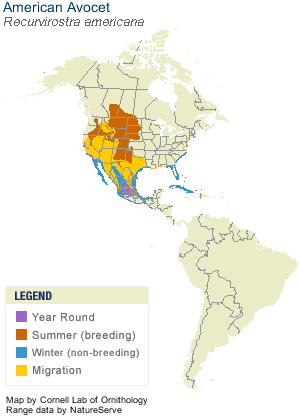
© 2003 Cornell Lab of Ornithology
|
Habitat |
|
Shallow fresh and saltwater wetlands. |
|
Behavior |
|
In its pre-copulation display, the male American Avocet preens himself with water, gradually gaining intensity to the point of frenzied splashing just before he mounts the female. After copulating, the pair intertwines their necks and runs forward.In territory establishment and in self-defense, performs elaborate ritualized displays. One notable display involves two pairs, or a pair and a third individual, facing each other in a circle and then stretching their bills toward each other. Upon the approach of a terrestrial predator, may approach the predator with a teetering gait and outstretched wings, as if on a tightrope. Also crouches on the ground as if incubating, only to move and crouch again in a new location.Feeds in shallow water, while wading or swimming. Locates food by sight and snaps it up, or sweeps its long bill through the water, capturing prey by touch. |
|
Food |
|
Aquatic invertebrates. |
Taxonomy
| Kingdom: | Animalia |
| Phylum: | Chordata |
| Subphylum: | Vertebrata |
| Class: | Aves |
| Order: | Charadriiformes |
| Family: | Recurvirostridae |
| Genus: | Recurvirostra |
| Species: | Recurvirostra americana |
Similar Species |
|
|
Bird Sound |
|
Call high-pitched whistling or piping. |
|
Eggs look like this |
|
Photo taken from: ARCTOS Collaborative Collection Management Solution |
